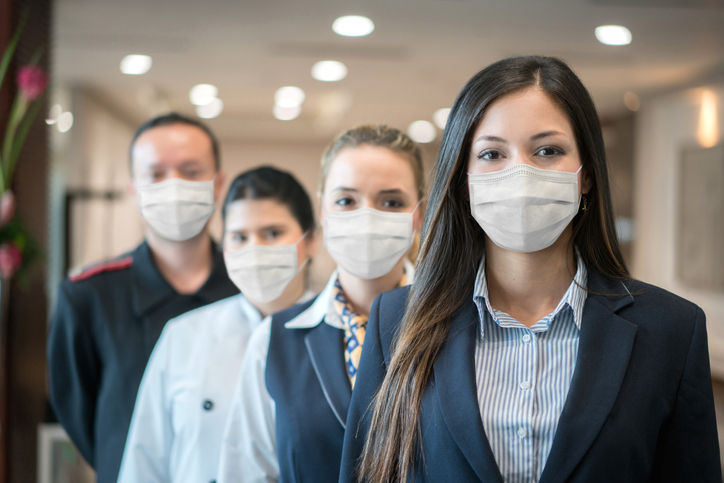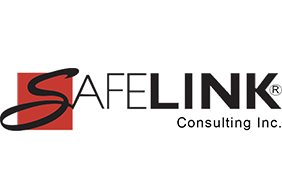The Biden Administration has taken the first step with new OSHA leadership to issue updated COVID-19 guidance for workplaces. As quoted by the National Safety Council, “The guidance issued today is the first step in the process, but it’s certainly not the last step in that process,” Jim Frederick, OSHA’s acting administrator and the agency’s principal deputy assistant secretary, said Jan. 29 during a Department of Labor virtual news conference.
The updated guidance, titled Protecting Workers: Guidance on Mitigating and Preventing the Spread of COVID-19 in the Workplace stems from an Executive Order signed by President Joe Biden on Jan. 21. In addition to issuing the updated guidance, the order directs OSHA to consider an emergency temporary standard related to COVID-19. If an ETS is considered necessary, the agency is instructed to issue one by March 15.
The timeframe for this standard is not clear at this time, however, it is clear that the updated guidance requires stronger language, such as employers “should implement” prevention programs to reduce the transmission of the coronavirus. Apparently, however, the National Safety Council has stated that the guideline does not provide any legal obligations for employers.
This guidance calls for employers to take steps to reduce transmission of COVID-19 among workers including:
- Adopting policies that encourage potentially infected workers to remain home without punishment for their absences.
- Protecting workers from retaliation for raising COVID-19-related concerns.
- Communicating policies and procedures in every language spoken by their workforce.
- Conducting hazard assessments and identifying control measures that will limit the spread of the coronavirus.
- Observing controls such as physical distancing and face coverings.
“More than 400,000 Americans have died from COVID-19 and millions of people are out of work as a result of this crisis,” M. Patricia Smith, senior counselor to the labor secretary, said in a press release. “Employers and workers can help our nation fight and overcome this deadly pandemic by committing themselves to making their workplaces as safe as possible. The recommendations in OSHA’s updated guidance will help us defeat the virus, strengthen our economy, and bring an end to the staggering human and economic toll that the coronavirus has taken on our nation.”
National Safety Council has reported also that OSHA Senior Advisor Ann Rosenthal stated that another step in the process is “streamlining” the COVID-19-related citation process. Apparently, the previous administration had “so many levels of review for COVID-related citations that, generally, they were issued on the final day of the six-month statute of limitations.” The goals of the streamlined process, she added, are timely abatement of hazards and informing workers.
Learn more about Reporting COVID-19 Cases to OSHA: Clearing Up the Confusion
Learn more about Recording COVID-19 Cases on OSHA Log
Many states have also taken actions to implement Emergency Temporary Standards. Here’s specific information for VA, CA, OR, and MI:
Virginia
Virginia Occupational Safety and Health (VOSH) Program and the VA Department of Labor and Industry published their 16VAC25-220 Emergency Temporary Standard in 2020. It was effective July 27, 2020. It was initially a six month program, however, the VA Safety and Health Codes Board adopted a Final Permanent Standard on January 13, 2021 with an effective date of January 27, 2021. It applies to every employer, employee, and place of employment in the Commonwealth of Virginia within the jurisdiction of the VOSH program.
The requirements for 16VAC25-220-70 takes effect on March 26, 2021. This section addresses the need for an Infectious Disease Preparedness and Response Plan. The training requirements in 16VAC25-220-80 take effect on March 26, 2021. This document is very specific regarding the training requirements. It’s important for all employers to document all COVID-19 safety training.
Learn more about VOSH New Online Reporting Portal For COVID-19 Positive Cases
California
California has also published an emergency temporary standard. This standard was approved November 30, 2020 and is now in effect. It requires employers to protect workers from COVID-19-related hazards. The California Division of Occupational Safety and Health (Cal/OSHA) requires employers to implement a written, site-specific COVID-19 prevention program, provide facial coverings to employees, correct unsafe or unhealthy conditions in the workplace, and ensure accurate recordkeeping and reporting of COVID-19 cases.
Cal/OSHA has gone even farther regarding requiring testing of employees and to notify local public health departments in certain circumstances. If there are three or more cases that occur in a 14-day period, or 20 or more cases occur over a 30-day period, then employer must immediately provide testing to all employees in the exposed workplace and repeat the testing one week later. They must also continue testing employees at least weekly until the workplace no longer qualifies as an outbreak.
Cal/OSHA already required a written Injury and Illness Prevention Program (IIPP), therefore, those employers who have the IIPP must ensure it covers COVID-19 concerns.
The California Code of Regulations, Title 8, Section 5199 also requires certain employers to comply with the Aerosol Transmissible Diseases Exposure Control Plan. It does provide an exemption for outpatient dental clinics or offices if they meet all of the following conditions:
“Dental procedures are not performed on patients identified to them as ATD cases or suspected ATD cases. a) The Injury and Illness Prevention Program includes a written procedure for screening patients for ATDs that is consistent with current guidelines issued by the Centers for Disease Control and Prevention (CDC) for infection control in dental settings, and this procedure is followed before performing any dental procedure on a patient to determine whether the patient may present an ATD exposure risk. b) Employees have been trained in the screening procedure in accordance with Section 3203. c) Aerosol generating dental procedures are not performed on a patient identified through the screening procedure as presenting a possible ATDF exposure risk unless a licensed physician determines that the patient does not currently have an ATD.”
Oregon
Oregon’s emergency temporary standard went into effective November 16, 2020 and remains in effect until May 4, 2021 unless revised or repealed before that date. It applies to all employees working in places of employment subject to Oregon OSHA’s jurisdiction.
Here are the components of the requirements:
a) Physical distancing
b) Mask, face covering, or face shield requirements (note that the standard states that “while reasonable accommodation for those unable to wear a mask, face covering, or face shield must be provided under applicable state and federal laws, such an accommodation does not include simply exempting individuals from the requirement to wear masks, face coverings, or face shields in public spaces.”
c) Cleaning and sanitation
d) Posting requirements: must post the COVID-19 Hazards Poster provided by Oregon OSHA “in a conspicuous manner in a central location where workers can be expected to see it. Employees working remotely must be provided with a copy of the poster through electronic or equally effective means.”
e) Building operators requirements for the owner of the building where there are other employers in the building.
f) Ventilation requirements
g) Conduct an exposure risk assessment no later than December 7, 2020 and must involve participation and feedback from employees.
h) Infection control plan in place no later than December 7, 2020.
i) Employer information and training no later than December 21, 2020 and lists specific requirements for inclusion in the training.
j) COVID-19 infection notification process.
k) COVID-19 testing for workers at no cost whenever a local public health agency or Oregon Health Authority indicates that COVID-19 diagnostic testing within the workplace is necessary.
l) Medical removal of employees when directed by the Oregon Health Authority, local public health agency, or a medical provider recommends restriction from work due to quarantine or isolation for COVID-19.
m) Employers covered by one or more of the mandatory industry-specific and activity-specific appendices that make up Appendix A of the rule must comply with those appendices.
Michigan
Michigan Occupational Safety and Health Administration issued Emergency Rules on October 14, 2020. They are in effect for six months from the filing with the secretary of state. Employers must develop and implement a written COVID-19 preparedness and response plan that is consistent with the current guidance by CDC and recommendations developed by OSHA.
Some of the requirements for employers under this rule are:
Employers must designate one or more worksite COVID-19 safety coordinators to implement, monitor, and report on the COVID-19 control strategies developed under the rules. The rule goes on to state that the safety coordinator must remain onsite at all times when employees are present onsite.
The employer must also place posters in the languages common in the employee population that encourage staying away from the workplace when sick, cough and sneeze etiquette, and proper h and hygiene practices.
Conform with physical distancing requirements of 6 feet by using ground markings, signs, and physical barriers.
Provide non-medical grade face coverings to employees at no cost to employee.
Follow industry-specific requirements.
If you have any questions or need OSHA training, please contact SafeLink Consulting or schedule a meeting to learn more about how we can help your business.
Learn more about OSHA Compliance for Dentistry
Learn more about Dental Lab OSHA Compliance
Learn more about what SafeLink Consulting can do to help your business with compliance services, including safety compliance, to meet OSHA training requirements and quality system consulting to meet FDA compliance. Industries include:
Dental compliance for the dental practice and the dental lab - workplace safety training, infection control training and HIPAA training online, quality systems lab, manufacturing custom implant abutment, gmp for medical devices manufacturers including the dental lab, and need for 510k consultants. Dental practice consultants.
Beverage compliance for brewery safety, cidery OSHA safety, winery safety, vintner safety, distillery safety - OSHA training requirements, quality system consulting and implementation of current good manufacturing practices for beverage manufacturers to ensure that your business is doing the best it can to provide products that are both healthy and safe for the public.
General industry compliance - our general industry OSHA compliance consultants and FDA compliance consultants are ready to assist you and your business.
Get notification when new regulatory compliance training courses are added plus upcoming events by subscribing to our email news.








Leave Comment